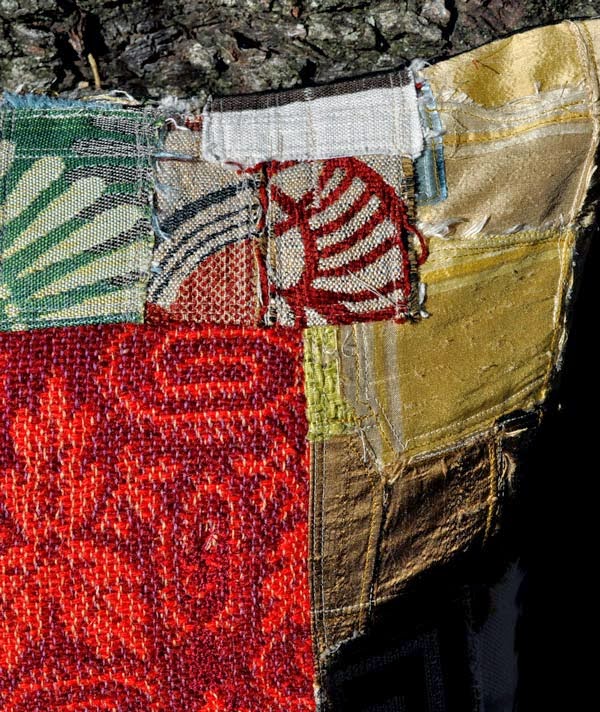Pillow made from 1960's? cotton corduroy pants that belonged to my brother-in-law's grandfather, 1920's (or earlier) wool tapestry , 1960's cotton curtain fabric, assorted silk, linen, and cotton scraps, a vintage tape measure, and catfish line (a nod to the time his grandfather spent in the Louisiana bayous.)
construction project
interior of pillow front showing applique stitching on old sheet, and white cotton pants pockets at bottom
.. plaid lining of the pillow back... I resorted to hand-stitching in places at the side seams where my machine couldn't sew over the thick pocket-seams in the pants. One aspect of working with a garment-- something I've been wanting to try-- is working around bulky seams. Using the pants was an opportunity for me to do that and to make something for my brother-in-law and sister that has personal meaning, but the process was cumbersome, so I think I'll call this experiment a one-off.
no-label pants
The corduroys used in the pillow were one among several "no-label" pairs of pants, including these chinos, which appear to be professionally made. The quality of construction details, while beyond amateur sewing, is nowhere near the finish level of fine tailoring. A guess is that his grandfather regularly ordered up sturdy and serviceable pants from his tailor and said "make it fast".
thinking of...
Peruvian artist Jorge Eielson who made art with old clothes-- this is Camicia 1964-- came to mind.
Also the Gee's Bend work-clothes quilts, like this one by Lutisha Pettway The dark spots indicate pockets that were removed prior to sewing, possibly to avoid sewing over bulky seams?
post-notes



















%2Bc.%2B1900.jpg)









